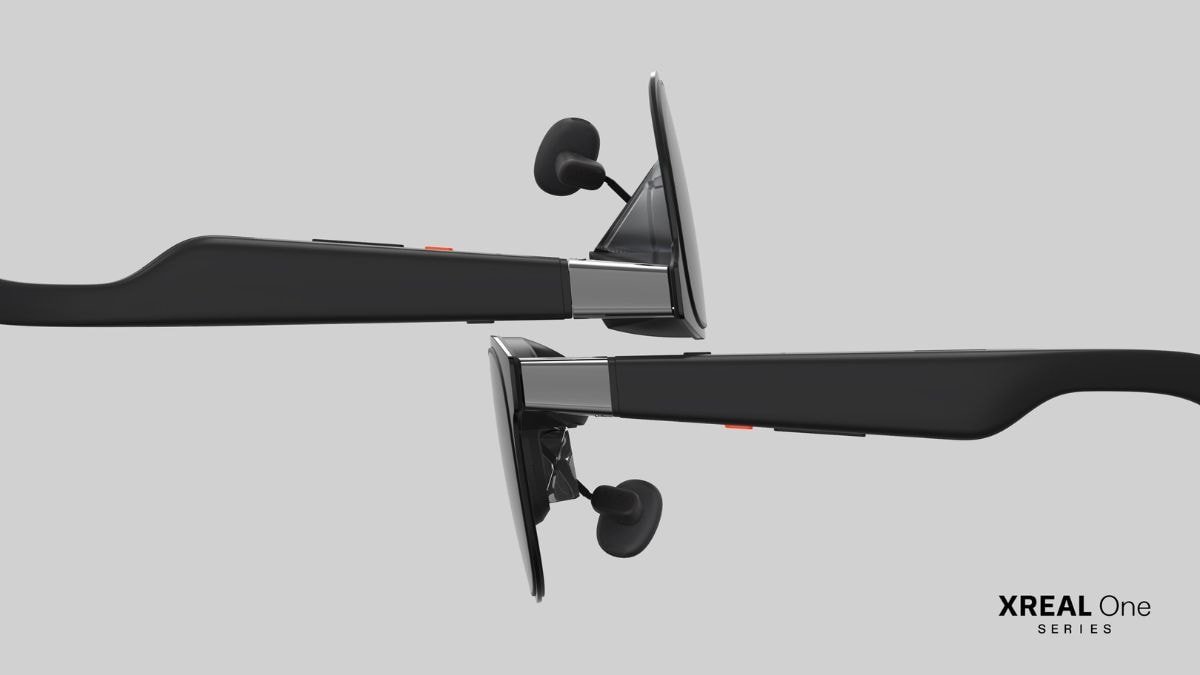Xreal One series augmented reality (AR) glasses were launched on Wednesday. The latest lineup from the Chinese startup comes with a new X1 independent spatial computing chip that is claimed to provide complete spatial screen control. Two models have been unveiled as part of Xreal's latest AR glasses lineup — Xreal One and One Pro. Xreal says its products feature a redesigned optical engine, adjustable interpupillary distance option, audio powered by Bose, and a multimodal camera powered by artificial intelligence (AI).
Xreal One, Xreal One Pro Price
Xreal One price starts at $499 (roughly Rs. 42000) while the Pro model costs $599 (roughly Rs. 51,000). Both models can be pre-ordered now and the AR glasses will be available for purchase in the US, the UK, France, Germany, Italy, Czech, Netherlands, China, Japan, and Korea.
The base model will start shipping to customers this month while sales of Xreal One Pro will commence in early 2025, as per the company.
Xreal One, Xreal One Pro Specifications
Xreal One are cinematic AR glasses which can deliver three degrees-of-freedom (3DoF) spatial computing. It takes advantage of the integrated spatial co-processing chip called X1, which is directly built into the glasses. Equipped with a proprietary optical engine, the company says Xreal One can provide visuals in a resolution equivalent to 1080p for each eye and a 50-degree field-of-view (FOV).
The base model is claimed to have a 20.7 percent larger display area than the Xreal Air 2 series while the Xreal One Pro has a 63.7 percent larger area. The AR glasses come with several customization options including screen size, screen distance, stabilizer, side view, brightness enhancement, display optimization, color temperature, 2D/3D switching, interpupillary distance (IPD) adjustment, volume and sound settings, button mapping settings, sensor calibration, and language settings.
Users can connect devices such as the iPhone, Android, Steam Deck, Windows PC, or MacBook, and stream visuals on the AR glasses in 3D space with a low motion-to-photon (M2P) latency of 3ms. The glasses support a refresh rate of 120Hz. Xreal One and Xreal One Pro come with a peak brightness of 600 nits and 700 nits, respectively. They have a TUV Rhineland certification for Low Blue-Light and Flicker Free experience.
Both models are equipped with a quad microphone setup for recording clearer audio and have sound powered by Bose. Further, the Xreal One series features a modular RGB camera called Xreal Eye which is a detachable accessory. It can capture still photos at 12-megapixel or record videos in 1080p at 60fps. The company says a future update will bring multimodal capabilities such as image recognition and communication via voice commands to the AR glasses, leveraging the host device's voice assistant.
Xreal One series features a magnesium alloy chassis and users can customize the look of their AR glasses by swapping out the front frame. The Xreal One weighs 84g, whereas the One Pro weighs 87g.


